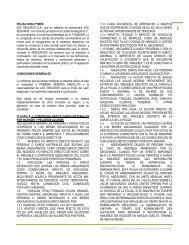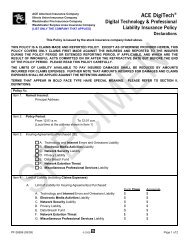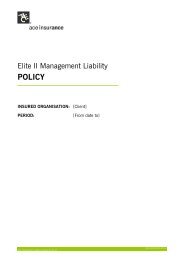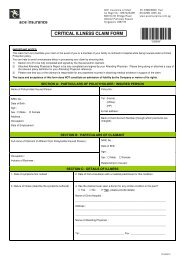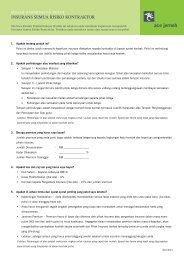REPUTATION AT RIsk - ACE Group
REPUTATION AT RIsk - ACE Group
REPUTATION AT RIsk - ACE Group
Create successful ePaper yourself
Turn your PDF publications into a flip-book with our unique Google optimized e-Paper software.
Ten steps to managing reputational risk1 Put the CEO in charge of reputational risk.The Chief Executive, together with the board, needs to instil and drive the riskculture within the organisation and demonstrate the right behaviour by example.2 Incentivise employees to guard your reputation.Leading companies are already making an awareness of reputational riskpart of their performance management and employees can make a valuablecontribution as “eyes and ears” of the business.3 Develop an “outside-in” perspective on risk.Apply a “reputational lens” to your key traditional risk categories to helpunderstand how damage to reputation might result if they are not properlymanaged and take steps to close any gaps.4 Value your reputational capital.Although methods of placing a financial value against reputation are still in theirinfancy, getting experts to review the impact of various reputational issues andcommunicating this widely across the company can certainly help drive themessage home.5 Monitor reputation across your markets.Actively listen to your main groups of stakeholders on the issues that affectyour reputation, and learn how to use new tools such as social media to monitorexternal perceptions more systematically.6 Create transparency and accountability.Encourage a sense of ownership for the brand among your employees, andensure that information is not “sanitised” or kept from senior management.7 Communicate your values, then live by them.Reputations are managed through positive actions, not just through defensivemeasures. Make sure there is clear, common understanding about thecompany’s values throughout all levels of the organisation and measure personalperformance against them.8 Plan for the next crisis.The cause of a reputational event may be hard to predict, but identifying theright team and processes to address these issues will help your company handlea crisis faster and more effectively.9 Develop a multi-disciplinary approach to reputational management.The CRO has expertise in risk management, but must work with PR expertsand other stakeholder-facing business functions to protect and enhancesomething as broad as the company’s reputation.10 Learn from others’ mistakes.Many of the major corporate reputational disasters of recent years provide textbook examples and there are many lessons and best practices that can beadopted from their analysis.23








